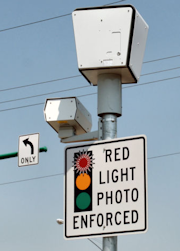by James A. Bacon
Yesterday, July 1, marked the day when bills enacted into law earlier this year went into effect. Among other changes in the way we conduct the affairs of local government, cities and counties are no longer required to obtain permission from the Virginia Department of Transportation to install red light cameras!
And that’s only one of fourteen measures designed to reduce state burdens on local government that are found in HB 1295. Another measure eliminates the requirement for teachers to engage in civic training in order to renew their licenses. Local courts can no longer require localities to construct new courthouses. And no longer must schools provide the estimated per-pupil cost of public education to students’ parents.
In a press release announcing the measures, Governor Bob McDonnell noted that he signed several other bills relating to local government. With one exception, it doesn’t add up to much. The difficult job of running a city or county in Virginia has not become significantly easier as a result. Consider the legislation more like housecleaning — wiping the dust off the top of the refrigerator, knocking down the cobwebs in the porch. Still, the measures, which originated from the efforts of a five-member task force to identify state mandates for repeal, are part of the necessary care and tending of state and local government.

No, I'm not talking about the General Assembly here. Local governments no longer need VDOT permission to install signs like this on highways.
In a reminder of the absurdities that arise from a Dillon Rule state in which localities can exercise no power that the state does not grant them, HB914 gives counties and towns authority, “pursuant to an agreement with the Commissioner of Highways,” to install “Children at play” signs on highways within their boundaries.
We can all breathe easier now.
The one truly substantive bill in the lot made the incorporation of Urban Development Areas (UDAs) in high-growth counties optional rather than mandatory, diluting one of the signature pieces of growth-management legislation enacted when Tim Kaine was governor. The idea behind UDAs was to concentrate growth in areas that could be efficiently served with utilities, public services and roads. The legislation specifically called for “new urbanism and traditional-neighborhood design” — pedestrian-friendly road design, interconnection of streets, preservation of natural areas, mixed-use neighborhoods, reduction of front and side setbacks and minimal densities.
After Kaine left office, the home building industry pushed back on this and street-connectivity legislation. Virginia has yet to devise an effective strategy for managing the costs associated with growth. Until we figure it out, rezoning petitions for development projects will continue to be contentious and inefficient human settlement patterns will push up the cost of local government.



